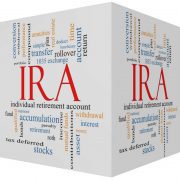How Active Should You Be with Your Self-Directed IRA?
The amount of time needed to build up a Self-Directed IRA is one of the first questions people ask about. Obviously, it requires more time than telling an outside account managing representative or banker once a year whether or not you wish to stay in a common fund with other employees for your Traditional IRA or 401(K).
When it is totally within your control to grow your funds, there is a greater sense of urgency to go along with the greater potential for wealth for your retirement years.
Control is the key word. You can also control the amount of time you spend in the process.
You can choose to be an “Active Investor”. There is no limit to the number of transactions you can have within your Self-Directed IRA, as long as each transaction meets all of the legal and IRS requirements already established.
Your investments could become a full-time or part-time job if you like. You could spend hours every day monitoring the price of precious metals, technical innovations, or real estate transactions geared toward flipping or wholesaling for a relatively quick turnaround.
On the other hand, you could choose to be a “Passive Investor” and have as few as one or two transactions which will provide for you in the long term. By doing so, your time commitment to your Self-Directed IRA could be less than one hour per month, enough time to deposit checks, pay any expenses associated with your transaction, and maintain your records for the IRS and your tax advisor.
There is no right or wrong answer, and you are not required to become either active or passive with your investing over the years. How you handle this could change with your life situation, or the right deal could come your way which makes you want to change course.
Suppose you invest in real estate. A passive investor could purchase one or more multi-unit buildings or apartment buildings, hire a property management company, and have monthly rental income lasting year after year. If you have a lot of years to go before you reach retirement, you could eventually use this rental income to purchase additional rental property and increase that monthly income. This method, as described above, would require only a small amount of time each month.
An active investor could be buying and selling one or more properties each month or as often as possible. Finding good deals which can result in a quick turnaround generally takes hours, as does the due diligence necessary to bring each transaction successfully to the closing table. Thus, is likely to be the time equivalent of a part-time or full-time job.
You do not have to categorize yourself as either an active or a passive investor. How you handle your Self-Directed IRA could have you somewhere in between.
Again, using real estate as an example, you could determine that you will add one property per year. You could take an hour here and an hour there searching for your best property deal under a self-imposed deadline which is months away.
Keep in mind that the amount of time you do or do not have available should not be the only factor in determining how active you will or will not be with your Self-Directed IRA.
Your personal level of expertise or experience could be a more important factor in making your decision.
Perhaps you already have experience at trading precious metals, and it is those funds which contributed to the funds for your Self-Directed IRA. If such were the case, you could do the same as you have been doing in terms of research and time commitments, with the difference being that you are growing your retirement funds instead of your taxable income for that month or year.
If you already own or transact real estate, the same concept applies. If you already invest in technology, you could use research you are already doing (or have already completed) toward purchasing and selling for your retirement funds.
Interested in learning more about Self-Directed IRAs? Contact American IRA, LLC at 866-7500-IRA (472) for a free consultation. Download our free guides or visit us online at www.AmericanIRA.com.






